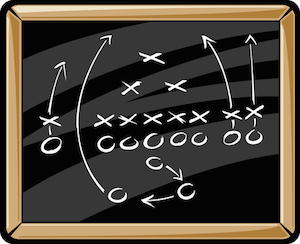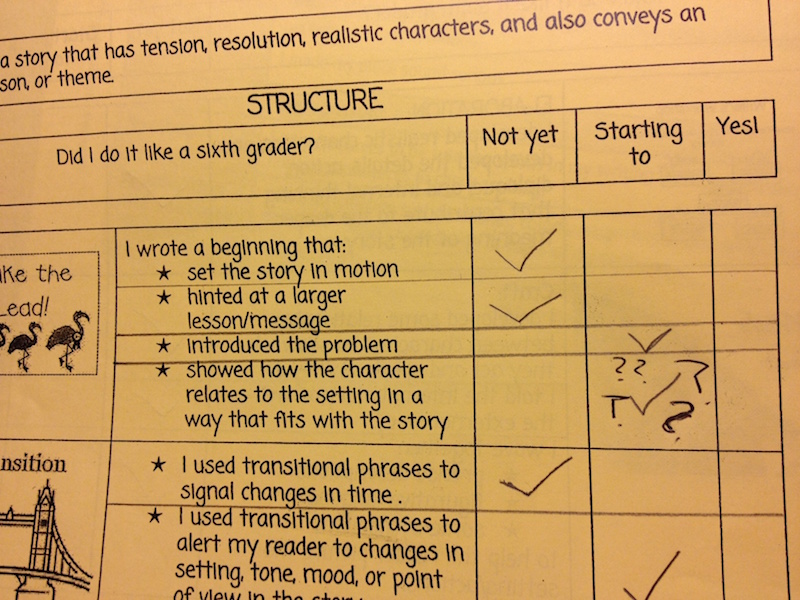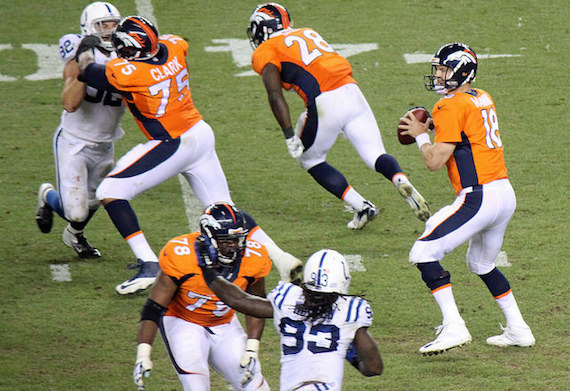The Super Bowl That Is My Classroom
A MiddleWeb Blog
 I’ve been watching a lot of football lately. It’s that time of year. The Super Bowl is the culmination of an entire NFL season, the Final Game, the game that decides who will be the champion.
I’ve been watching a lot of football lately. It’s that time of year. The Super Bowl is the culmination of an entire NFL season, the Final Game, the game that decides who will be the champion.
This year marks the 50th Super Bowl in United States sports history. The Denver Broncos’ Peyton Manning, a 39-year old veteran of 18 NFL seasons, and Cam Newton, the 26-year old, 5th season quarterback of the Carolina Panthers, will lead their teams into the Big Game. Both quarterbacks have talent and skill. Both have been effective in helping their teams find a way to win.

If Denver takes the Lombardi Trophy, I’m thinkin’ Peyton may choose to retire. He’s had a great run. But only Peyton knows if he still possesses the inner drive to play on. Only Peyton knows what he’ll do after the big game on February 7th.
I think I might have a slight inkling of how Peyton feels.
The teacher and the quarterback
I didn’t choose to drop my yearly salary down from $19 million to $15 million last year, like Peyton did, but the continuous hikes in health care costs for teachers in New Jersey are a pretty big hit on my team’s monthly budget. Like Peyton, I am lucky enough to do something that I love as a career, and like Peyton, I’ve been in the game for a while.
The Broncos and the Panthers will play four quarters on Super Bowl Sunday. As in football, our school year is broken into four quarters, or marking periods, as the case may be. Every quarter of every season is marked by the distribution of report cards. And each marking period brings a change in game plan.
It’s half-time at the Teacher Bowl!
Back in my classroom arena, it’s time to reflect on our progress so far, to identify what strategies are working for us, and to lay out some goals or a goal line, as the case may be, that need to be made for a successful second half.
Like quarterbacks, teachers benefit if they have a running as well as a passing game. There may be an amazing downfield pass made from time to time (I have certainly thrown a Hail Mary or two in the course of each season!), but mostly, we try to move the ball down the field slowly, making steady progress and trying to use the clock to our advantage.

There sure are a lot of red flags being thrown onto the field, as the coaches and players challenge the calls being made by the officials. The standardized test scores, which have so much to do with how the game is played, don’t tell us which officials have experience actually playing in the game.
Regardless of the calls being made on the sidelines (or up in the booth), the narrative portion of our district’s report card provides each family with a much more personal look into their child’s progress. When it comes to my players, I study the tapes carefully so I can make the right analysis.

These are the player statistics that I report to parents, but a player’s stats can’t really be understood and evaluated if you’ve never watched him on the field. It’s impossible to analyze his performance with statistics alone.
Our team’s cumulative record keeps track of each game throughout the season, and this season there are profiles of 20 individual players – our student portfolios. Each includes a record of where things stood when the season began. Each reveals highlights from former games, plays that were practiced and implemented, and goals and changes in strategy that need to be made. The contents of each player portfolio guide my report card narratives, as I sum up the first half.
A Peek into the player performance profiles
Student writing is difficult to accurately assess. Great writers can be horrible “punctuationists,” and kids who have difficulty with other aspects of written and expressive language can be quite good at crossing every “t” and dotting every “i.”

One of our district’s “Kid Friendly Expository Writing Rubrics” proved very helpful in getting a handle on each player’s performance. The rubric is based on Lucy Calkins’ simple idea of “Not Yet,” “Starting To,” and “Yes.” There is no confusing verbiage in it that may delay the game. It is a simple, developmentally appropriate rubric that helps guide my analysis and reporting of what is an incredibly subjective topic.
Each player profile also contains two reading assessments, one from September and one from two weeks ago. These Fountas and Pinnell assessments include a word-by-word analysis of how each child reads aloud, coupled with questions that reflect both concrete and critical understanding, and interpretation of the text.
There are scribbled notes jotted in the margins, to highlight various aspects of each player’s speech patterns, phrasing, use of voice inflection, and use of punctuation. This data is priceless in giving feedback to parents, offering support on the sidelines, and keeping us all in the game.
“Let’s go to the videotape!”…
Here’s a video of one of these assessments being conducted. It was helpful to watch, even though this professional educator doesn’t have a dozen or so other players running around the field while she is gathering her data!
I enjoy being the quarterback
In addition to these reading assessments, samples of personal narratives and journal writing offer much insight into each child’s social and emotional well being. These are some of the key ingredients in our writing playbook, and I enjoy being the quarterback of my classroom.
It’s a role I am quite comfortable with. For years, I’ve felt confident, staying in the pocket, knowing I have a strong offensive line in front of me. I have also learned how to scramble when something goes awry with the play, and I need a quick Plan B.
There is a lot of trading going on within our franchise these days, though. I don’t feel the same sense of safety that I used to, standing in that pocket, waiting for the play to take shape, knowing I am protected and able to look down the field to focus on the goal ahead.
And getting sacked hurts! It’s hard to get back up, shake it off, and call the next play. But that’s exactly what needs to be done. In our classroom, I’m the quarterback. It’s my job to call the plays…and right now, we’ve still got an entire second half to go. It’s time to get back into the game.
Fun Super Bowl Resources for the Classroom:
Top 12 Super Bowl Activities for the Classroom by Kim Haynes
Super Bowl Blitz: Football-Related Activities for Fans of All Ages



































Quarterbacks and wanna B superheroes have a great deal in common. Our students come first and sometimes we are the coach with the “most” :-)
Thanks for the smile, Kathy!…Play Ball!
Thanks for the comment, Noel…and Cam has some mad QB skills!…as do many teachers in NC whom I’ve had the privilege of working with…I’m a Giant’s girl, myself…so I’ll be rooting for Eli’s brother :)
I am reminded that our 4th and 5th grade teachers make a huge difference in the lives of our students. Graduating from high school is our primary goal line but earning a door into a secure future is the ultimate goal and these teachers hold the key.
We are from North Carolina, so our “quarterbacks” will be running with Cam this Sunday!!